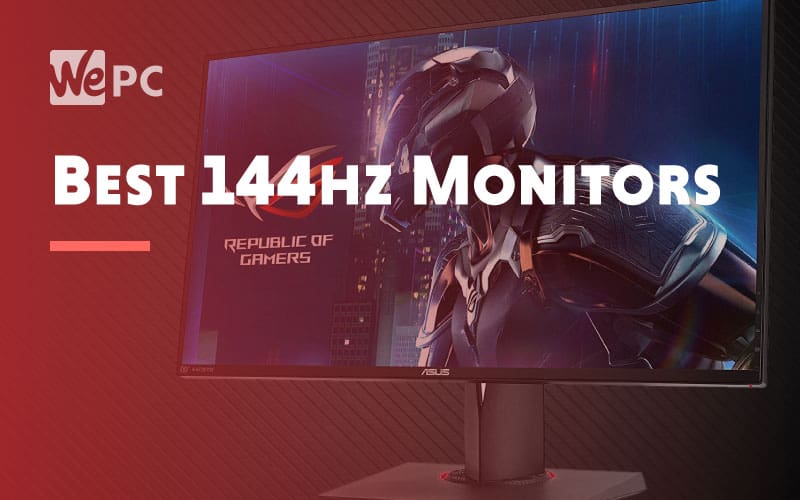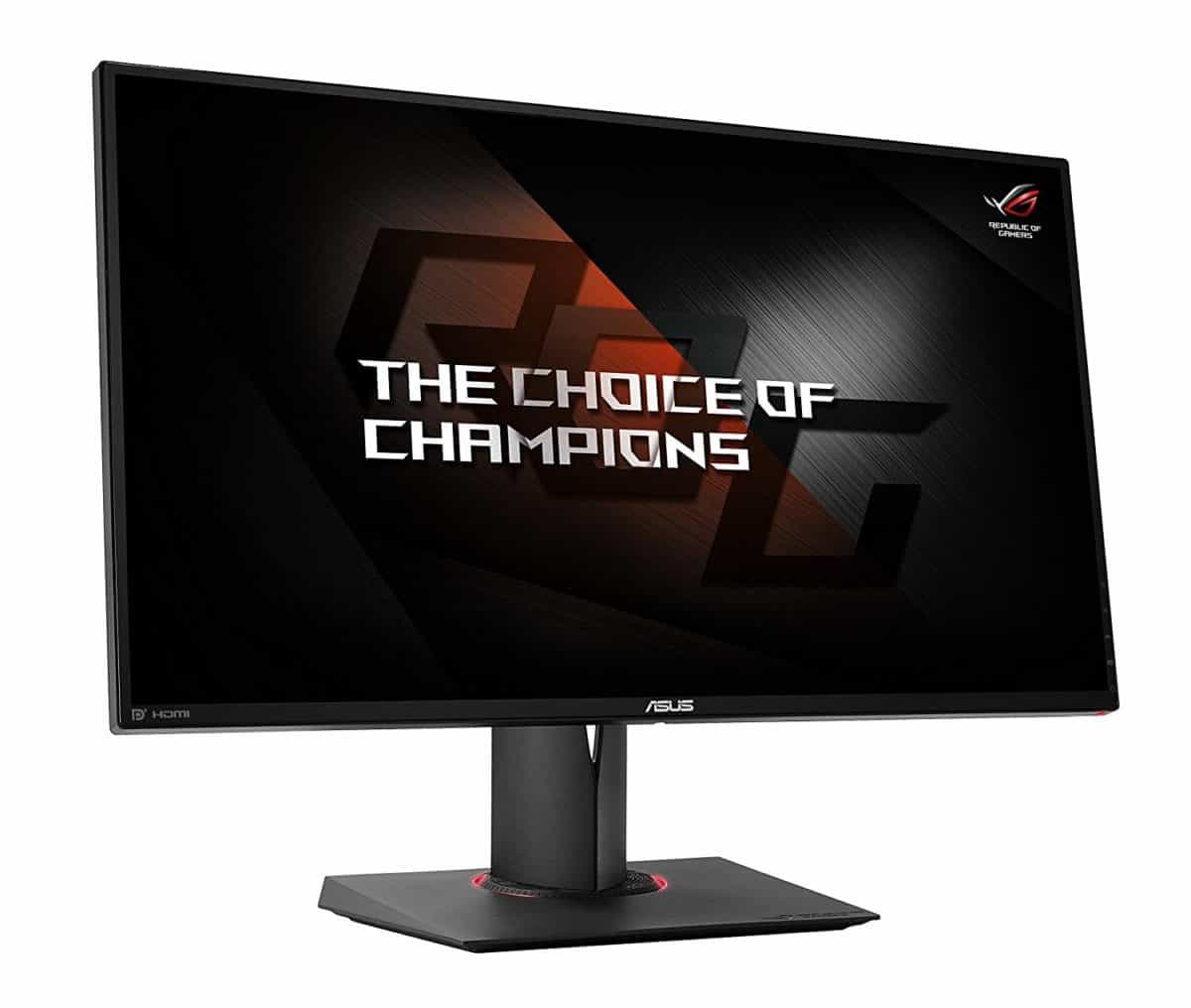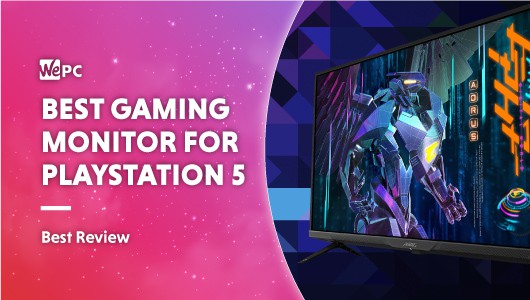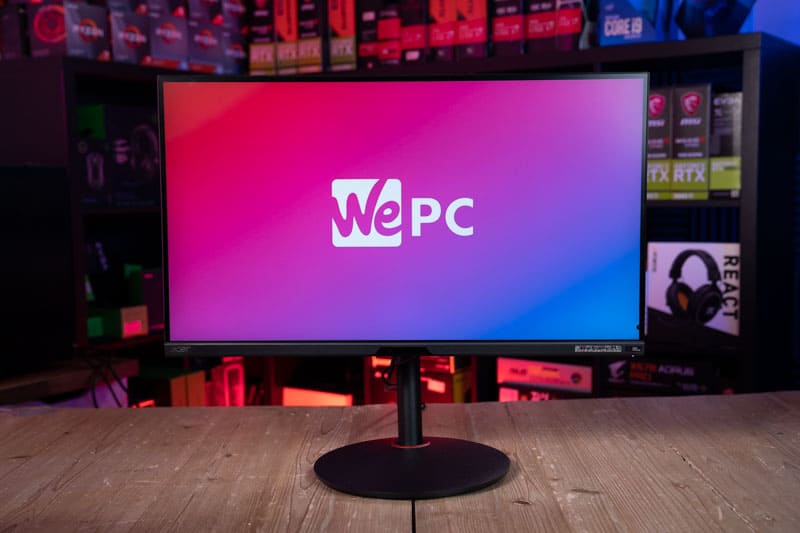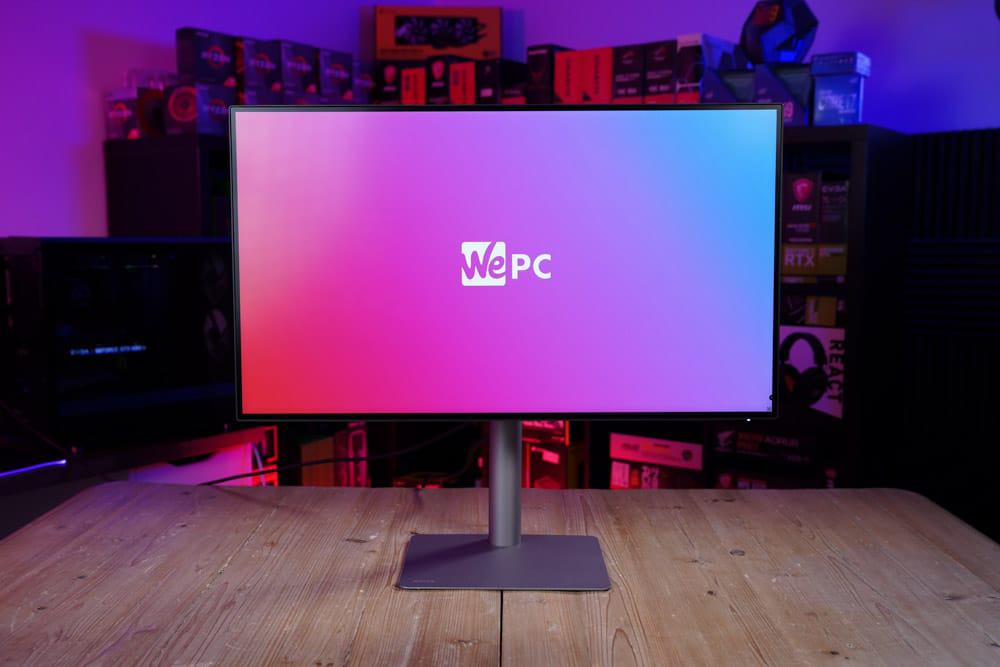How We Choose
Whether we’re reviewing new monitors or the best GPU on the market, choosing the right hardware can always be a tricky task.
It requires hours of product research, performance benchmarking, and reviewing user feedback to get anywhere close to a definitive conclusion on what to recommend.
If you aren’t tech-savvy and struggle to put the time aside to go through the above requirements, you may end up purchasing a GPU that simply isn’t right for you.
Fear not though, friends! Here at WePC, we like to take the stress of research away, and transform the whole process into an easy-to-follow, complete buyers guide. That’s right, our team of PC enthusiasts has done all the hard work for you!
How We Test
Testing the products we recommend is a huge part of the overall selection process in our best of guides. It’s a way to make sure what we recommend is, without a doubt, the best option in its specific category.
To be sure a product is “the best,” it must show excellent performance in our tests, and display better qualities and features than the competition it faces.
Most of the products we recommend here at WePC have gone through a strict testing process that involves everything from the price and performance, to build quality, efficiency, and aesthetics. Each product is pushed to the limit to see how it performs under intense stress to make sure it warrants our coveted top spot.
Doing this enables us to provide you with the most accurate review of how the product performs and, ultimately, whether it’s worth your hard-earned cash.
Things To Consider
So, you’ve found your way to our page, but you still aren’t sure whether our recommendations are right for your specific needs! Well, don’t worry, below are the most important questions you need to ask yourself before your next monitor purchase. Make sure to explore the following factors and you’ll ensure your next monitor is the right one.
With that in mind, let’s dive into the things to consider before buying a 144Hz monitor;
Is a higher refresh rate better for gaming?
If you’ve been playing on a budget PC for a while, you understand the frustration that comes with in-game lag and FPS drops. It’s infuriating. Well, when you finally decide to upgrade your PC to a high-performance gaming rig, you might find that those lag issues haven’t actually gone away. That’s because your monitor might be holding you back.
A monitor comes to the table with a plethora of different specs, however, one of the most important (when it comes to gaming) is the refresh rate. The refresh rate refers to how often the picture physically refreshes per second. It is measured in hertz (Hz) and has a direct impact on the smoothness of your gameplay.
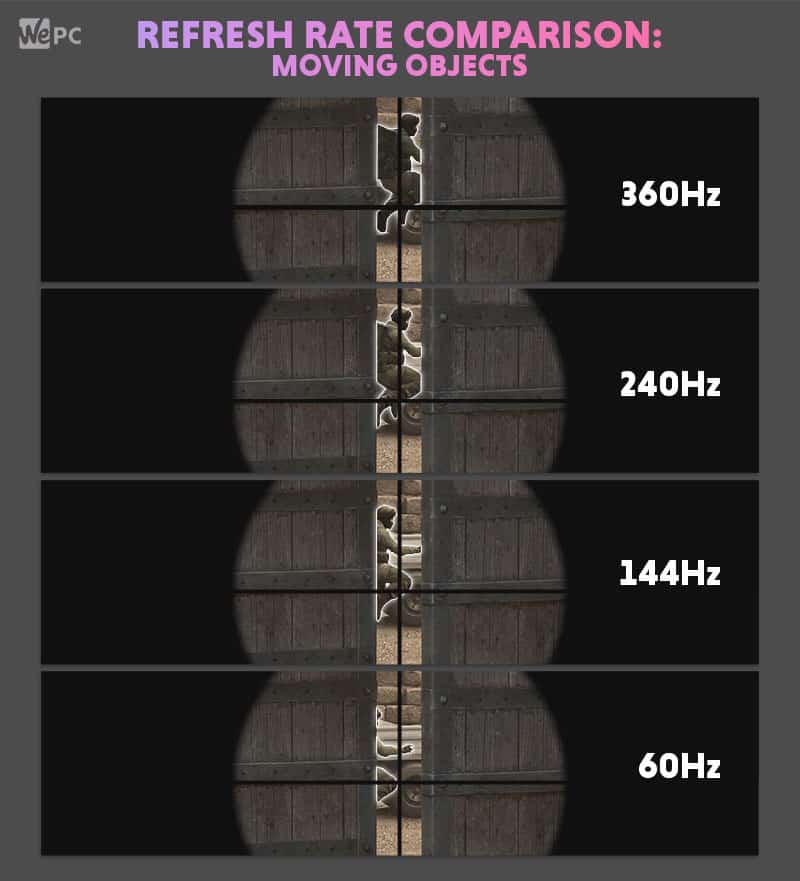
Refresh rates can vary dramatically from budget monitors to high-end ones, so finding the right middle ground for your needs is essential.
Below are the most commonly used refresh rates today:
- 60Hz
- 75Hz
- 100Hz
- 120Hz
- 144Hz
- 240Hz
The higher you get up the “refresh rate ladder”, the smoother your gameplay is going to be.
For me, 144Hz is the sweet spot for fast-paced FPS games. Be aware though, to be able to make use of a high refresh rate, your PC must be able to produce equal or higher frame rates – something we will touch upon shortly!
So, to answer the question, yes. Yes, it is.
What are FreeSync and G-Sync?
FreeSync and G-Sync are adaptive sync technologies that help smooth out the motion of your gameplay. To carry on what we were talking about above, for the smoothest possible gameplay, you want your frame rate and your refresh rate to be in complete synchronization.
Obviously, that is hard to achieve when your frame rates bounce around like crazy for the most part. However, adaptive sync technology is a tool that helps lock these to figures together. Whether it’s FreeSync or G-Sync, the technology will match your FPS to the monitors refresh rate – ultimately creating an even smoother visual experience.
What is the best response time?
Response time is probably the second most important thing to consider when buying a gaming monitor. It’s a measure of how long it takes the pixels of a monitor to change colour – usually in the grey-to-grey transition.
A lot of modern-day monitors come to the table boasting at least a 5ms response time, however, gaming monitors can go much lower. Several monitors in this guide have response times of well below that and for good reason.
If you’re playing a fast-paced FPS game on a monitor that has a high response time, you will experience screen ghosting or motion blurring. That’s when the image has changed faster than the pixel can.
Overall, if you’re buying your next monitor for gaming, always aim for one with a response time under 4ms.
Getting a cheap 144Hz monitor
Price should always be high on your list of considerations when you’re buying any hardware component. Even more so when looking for the best 144Hz monitor though.
Why? Because there are hundreds of 144Hz monitors to choose from and the difference in price can be exponential – as you’ll see shortly.
Luckily, there is a pretty large market for budget 144Hz monitors and we’ve been smart enough to recommend a few in our guide.
144Hz and 4K screen resolution
On the other end of the price-spectrum lie the 4K 144Hz monitors. Even though they’re only a few of these, they all come to the table boasting an array of high-performance specs, excellent features, and stunning aesthetics.
If you do plan on looking into the 4K 144Hz monitor market, you first need to ensure your PC has the relevant performance power to push the frame rates needed in 4K.
Playing 4K (in any setting) is extremely taxing on your system. Like we mentioned above, to get the most out of a 144Hz monitor, you need to be producing 144 FPS. To produce that in 4K requires the most powerful graphics cards to do so – I’m literally talking 2080Ti… and probably in SLI.
So, the main thing to take away from this is, graphical performance is absolutely essential when using a 144Hz monitor – and even more so in 4K.
Best 144Hz monitors 2022: in-depth reviews

ASUS ROG Swift PG278QR Gaming Monitor
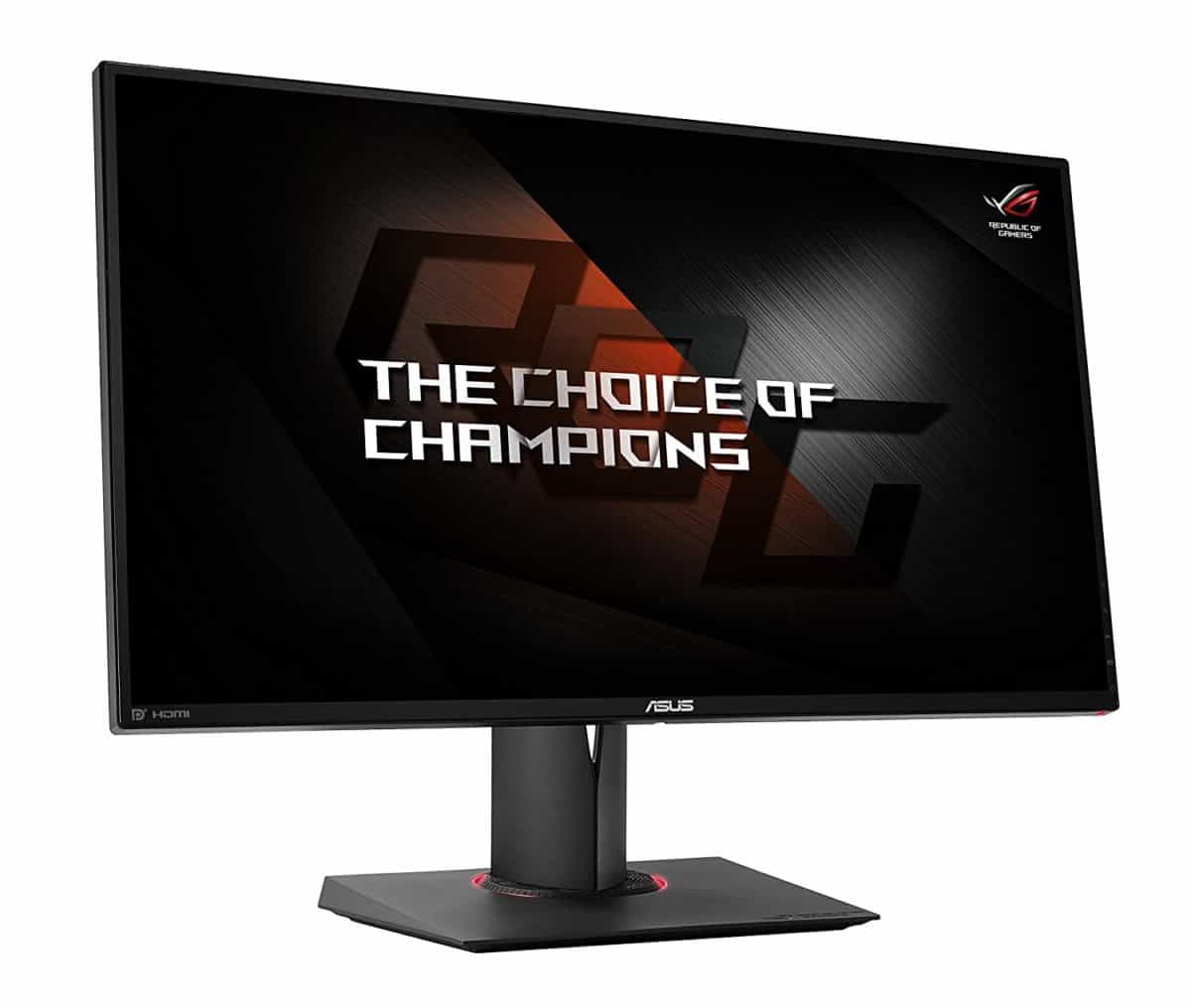
Size
27”
Refresh Rate
144Hz – 165Hz
Response Time
1ms
Panel Type
TN
Maximum Resolution
2560 x 1440
- Refresh rate can be overclocked to 165Hz
- Very adaptive ergonomic stand
- G-sync compatible
- Great design & thin bezels
- User friendly OSD with physical buttons
- TN panel
ASUS’s ROG SWIFT PG278QR takes our top spot for the best 1440p 144Hz monitor, and for good reason. It comes to the table boasting not only a WQHD resolution, but other high-end specs like a 1ms response time, G-Sync support, ASUS eye care technology, and a fully ergonomic stand as well.
To touch on aesthetics briefly, the Swift comes with a subtle design that would easily fit into most background settings. Having said that, this is a gaming monitor, and it does have a few gamey design features. The base of the stand has a red LED ring, and the stand itself looks pretty gnarly and angular. The stand, which we’ll touch on next, also comes with a hole for cable management. Overall, a very nice looking monitor.
The stand is fully ergonomic and allows users to reach the absolute perfect viewing position through tilt, height, swivel, and rotational adjustments. It feels extremely robust as well, which is definitely a plus when comparing to other stands at this price point.
ASUS has equipped the PG278QR with an array of high-end specs, which include a (overclockable) 165Hz refresh rate and a lightning-fast 1ms response time. This is going to be the perfect platform for gaming, especially users with powerful systems. To ensure only the smoothest levels of gameplay are achieved, they’ve also given the Swift G-Sync support as well.
Ultimately, what you have here is the ultimate all-round 144Hz monitor. It offers everything you could possibly need, and at a price point that is certainly justified.

ASUS VG279Q Gaming Monitor
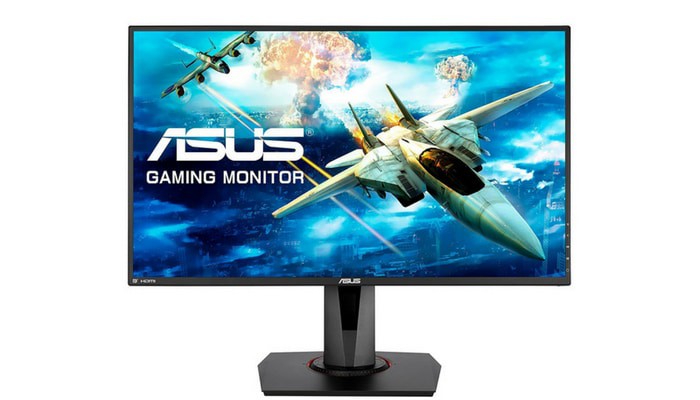
Size
27″
Refresh Rate
144Hz
Response Time
1ms
Panel Type
IPS
Resolution
1920 x 1080
- Versatile stand
- Excellent value for money
- Highly responsive
- Great gaming performance
- Supports AMD FreeSync Technology
- Poor Speaker Quality
Next up is our 1080p 144Hz monitor pick – and once again, ASUS takes the crown for this one.
The VG279Q is their FreeSync 1080p gaming monitor that comes equipped with cool aesthetics, a 144Hz refresh rate, 1000:1 contrast ratio, and a 1ms response time all wrapped up in a stunning IPS panel — a superb monitor when you consider the price.
The design of the VG279Q is very similar to that of the 1440p pick, the ROG Swift PG278QR. It offers the same color theme and basic design – great for most backdrops. That is where the similarities end, though. The stand is much less versatile, and it loses ROG branding. However, it does keep the red LED ring around the base of the stand, so, swings ‘n’ roundabouts.
I was pretty impressed when I used this thing for gaming, delivering a smooth visual experience thanks to the fast 144Hz refresh rate and low 1ms response time. I didn’t experience any visual artifacts like screen tear and motion blur as the monitor came with pretty effective FreeSync support (G-Sync compatible). I also found the color recreation to excel that of the Swift – we can thank the IPS panel for that.
While this was once considered a relatively expensive panel, in today’s market, it resides at the lower end -showcasing excellent value for money.
Overall, a superb monitor that also showcases extremely good value for money.
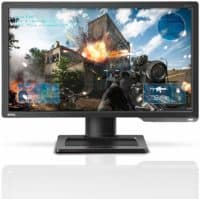
Size
24″
Refresh Rate
144Hz
Response Time
1ms
Panel Type
TN
Maximum Resolution
1920×1080
- Features tailored towards esports
- Very low response time
- Fully adjustable stand
- Great overall gaming performance
- Leaning towards expensive
- TN panel
I had the pleasure of using the BenQ XL2411P for a good few months recently and can safely say it’s a superb monitor when it comes to gaming. Before we go into gaming performance, though, let’s discuss the design.
Let’s be honest; the guys at BenQ haven’t spent a great deal of time in the design department for this monitor. It’s pretty basic and is predominantly made of plastic. The stand is fairly basic but does have height, swivel, and rotational adjustments. With an all-black theme, the monitor certainly doesn’t scream “gamer,” either.
The monitor has pretty decent gaming specs – offerings 144Hz refresh rate and a 1ms response time, which seems to be the go-to these days. Other features of this monitor include BenQ’s Black Equalizer, which helps highlight dark areas of gaming maps. It also offers a color vibrancy setting, which allows users to swap between preferred tones and gradients. That being said, the XL2411P doesn’t excel in the color recreation category. Being a TN panel, the XL2411P does struggle with color accuracy and viewing angles. But for me, as a gamer, I was more concerned with the smoothness of my gameplay.
Ultimately, if you’re looking for a superb esports gaming monitor at a reasonable price, look no further. However, if you enjoy more creative workflows, you might want to consider something else.
Samsung Odyssey G5 (LS32AG550)
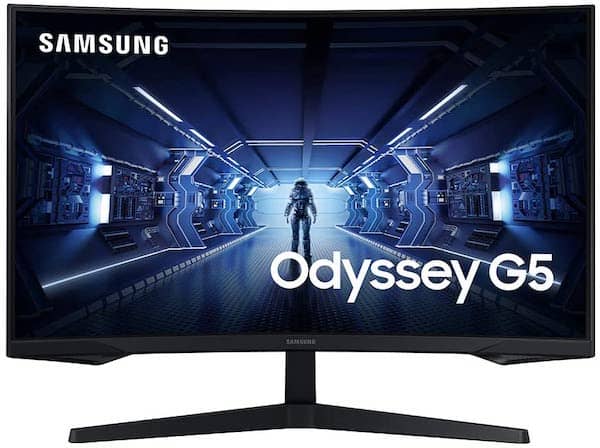
Refresh Rate
165Hz
Response Time
1ms
Screen Size
32″
Resolution
2560×1440
- Immersive 1000R Curve
- Quick 165Hz refresh rate
- 1440p picture clarity
- Decent 2500:1 contrast ratio
- Peak brightness isn’t great
- Build quality is very poor
The best 144Hz curved monitor comes in the shape of Samsung’s budget-tailored G5. While Samsung has been better known for TVs and mobiles, recent years have seen them create some of the best gaming monitors the market has to offer. Their Odyssey G-series was a breath of fresh air when it first hit shelves, with the latest iterations packing the same impressive feature list as the originals.
Looking at the design, this thing looks utterly superb. With a sleek and stylish design, the Samsung G5 is right up there as far as aesthetics go. That being said, it doesn’t offer the best build quality and does feel a little on the flimsy side. When you consider its price, however, that’s pretty much what you’d expect. It also features no RGB, giving it a more understated style.
That said, with a ton of premium features, I’m surprised this monitor isn’t more expensive. It offers a stunning 27inch VA panel equipped with a crisp 1440p QHD resolution. With HDR support and some great gaming specs, this thing pretty much does it all. While the color recreation is good, it’s nothing to write home about. More importantly, however, is the gaming-tailored specifications that pair together for a smooth, immersive gaming experience.
If you want to experience the immersion that comes with a curved display, we think the Samsung G5 is a great place to start. It offers brilliant all-round performance at a price point that won’t break the bank.

ASUS ROG Swift PG32UQ
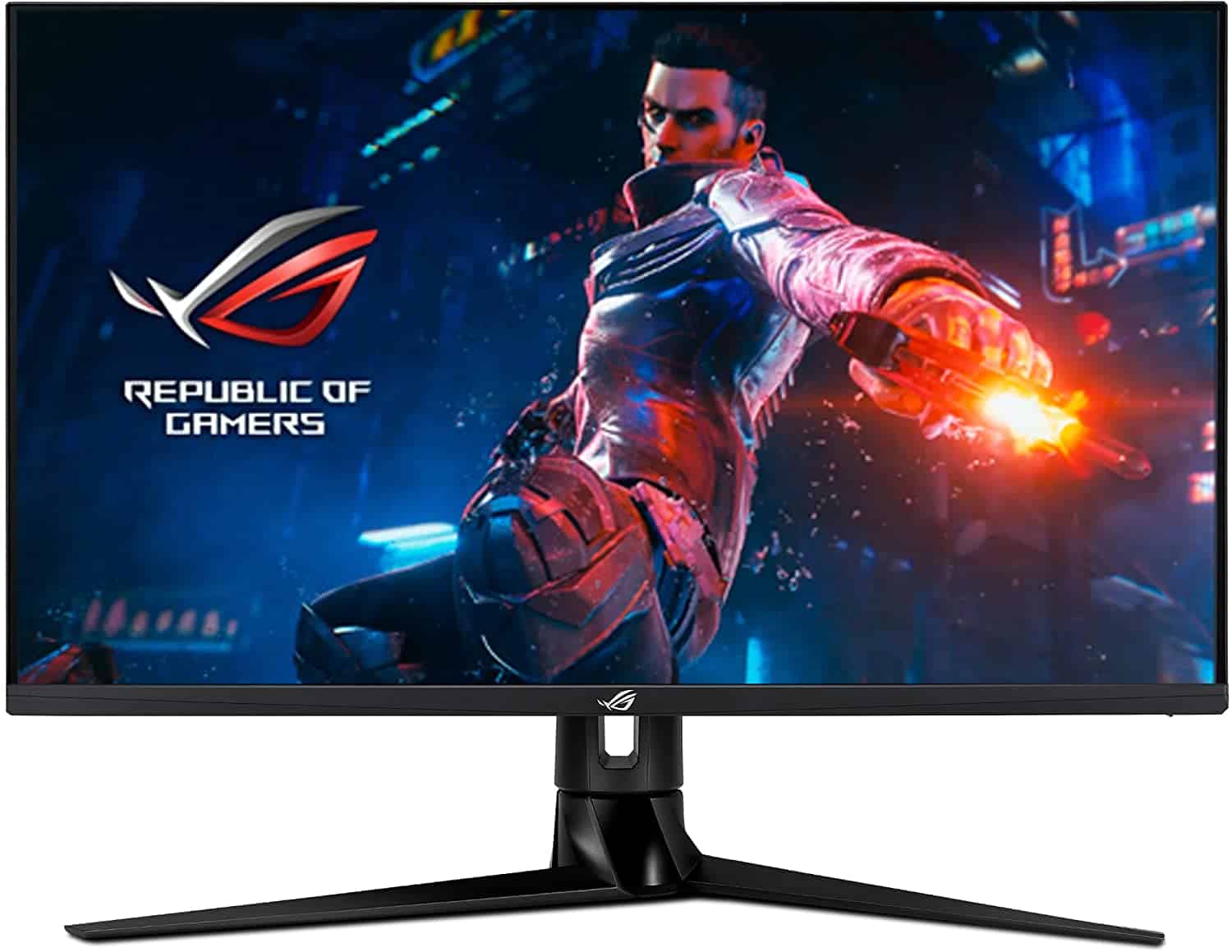
Refresh Rate
144Hz
Response time
1ms MPRT
Screen size
31.9″
Resolution
3840 x 2160
- Quantum Dot Technology
- 155Hz refresh rate (via overclock)
- Excellent image clarity
- Fantastic build quality
- Decent value for money
- Local dimming feature is buggy
- Some stand limitations
Finally, we have the 4K 144Hz monitor pick. It’s the ASUS PG32UQ – quite simply one of the best monitors I’ve had the pleasure of using.
The PG32UQ comes to the shelves with a textbook ASUS design, showcasing all the usual traits we’ve come to expect from the ROG SWIFT range. The large 32-inch screen offers up thin bezels that promote excellent levels of immersion when gaming. The stand and general build quality also feel absolutely rock solid – not to mention stylish. A chrome logo found on the bottom bezel works nicely with the base of the stand to produce a very premium feel.
From a performance standpoint, this monitor does it all. It comes equipped with a 4K resolution, a 144Hz refresh rate, 1ms GTG response time, HDR 6000 certification, and a 160% coverage of the sRGB color gamut. This is all wrapped up in a stunning 27″ IPS Quantum Dot display, which offers excellent viewing angles and realistic color recreation for the most immersive experience.
The only downside to this monitor, and it is a downside, is the price. It is by far one of the most expensive monitors on this list and comes in at well over $800 at the time of writing this. That being said, when you compare this to other similarly spec’d monitors, it still offers a very competitive price point.
However, if you have the cash to splash on a luxury-grade monitor like this, we feel this is the best in class.
144Hz gaming monitor: FAQs
Is a 144Hz monitor worth it?
Generally speaking, a 144Hz monitor is mostly considered to be best-suited to pro-gamers or competitive gaming, so if you fall into either of those categories, then a 144Hz monitor is absolutely worth the investment. Not only will the addition of a 144Hz monitor be able to offer you a more immersive and responsive gaming experience, but you’ll also have a distinct advantage over opposing players who are using a regular monitor.
144Hz monitors also offer impressively high refresh rates, which caters perfectly to the needs of professional gamers, or competitive first-person shooter and multiplayer games, who benefit from a higher refresh rate because it means they move data more quickly, allowing for a slightly faster reaction speed. However, despite becoming a hot commodity over the past few years, they’re not the cheapest of monitors out there and are almost always unnecessary for casual or recreational gamers.
Will 144Hz monitors increase FPS?
No, a faster refresh rate will not mean that the monitor will be able to provide you with extra frames. If the hardware you’re playing on can only offer you, say, 70 frames per second, then that’s all you’ll be able to get. On the contrary, a monitor with a faster refresh rate won’t be able to necessarily increase the performance, but it will be able to make the overall gaming experience feel more smooth and immersive.
Can the human eye see 144Hz?
Interestingly enough, human eyes aren’t actually able to see anything past 60Hz. This means that we can only visibly see up to 60 frames per second, anything more than that our eyes are simply unable to process quickly enough. However, some people do argue that the figure is much higher, though, at this time, there is little evidence to support that the human eye can process anything higher than 60Hz.
This begs the question, then, why 75Hz and 144Hz monitors are all the rage. If you’ve been asking yourself this, then the answer is quite simple: monitors that offer a higher refresh rate are able to provide you with on-screen data faster than standard monitors. This essentially means that, though you may not be able to process the frame rates, you will be able to see the images on-screen more quickly, as the monitor will be able to update the screen at incredibly high speeds. This is why 144Hz monitors are so great for competitive play because they are able to improve reaction time.
Is 144Hz worth it for casual gaming?
If you’re a casual gamer, then we don’t recommend investing in a 144Hz monitor. This is because 144Hz monitors are specifically designed to be able to benefit a professional gamer or someone who regularly spends time playing competitive multiplayer/first-person shooter games. For these types of gamers, a 144Hz monitor is a dream come true, because the higher refresh rates are able to provide a distinct advantage over their opposing players. The reason being that a higher refresh rate ensures that the monitor is able to process and update on-screen data ultra-fast, which helps the player strategize and react quicker within the game than if they were playing from a standard 60Hz monitor.
With that being said, if you’re a casual player or someone who only plays from time to time, then you would be wasting your money by investing in a 144Hz monitor. Not only will it set you back hundreds of dollars, but you’ll also find that you don’t make use of its full potential because you simply won’t need to, which is why we recommend considering a slightly slower monitor such as a 75Hz monitor.
Final word
So, there you have it, our comprehensive guide to the best 144Hz monitors in 2022. Hopefully, this guide has made choosing your next 144Hz monitor a little less stressful and has given you options you didn’t know existed. If you feel our list of the best 144Hz monitors doesn’t meet your needs, why not leave us a comment below letting us know any monitors we didn’t feature in our guide.

